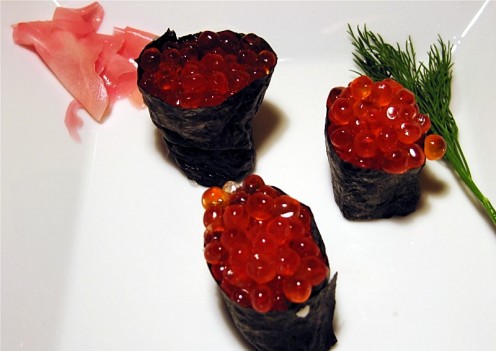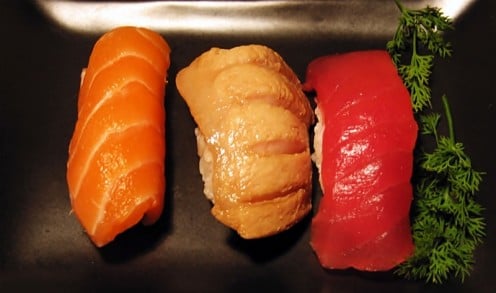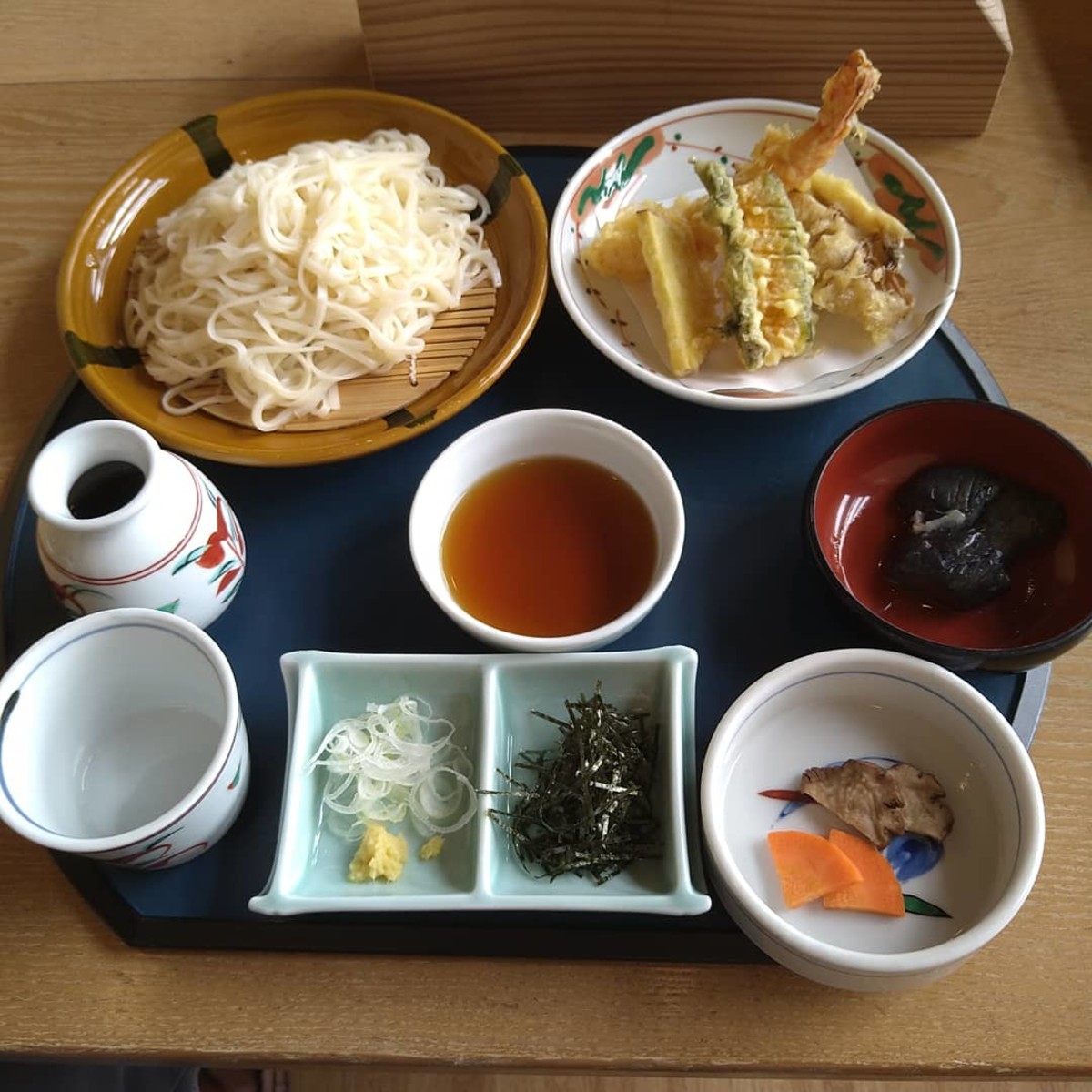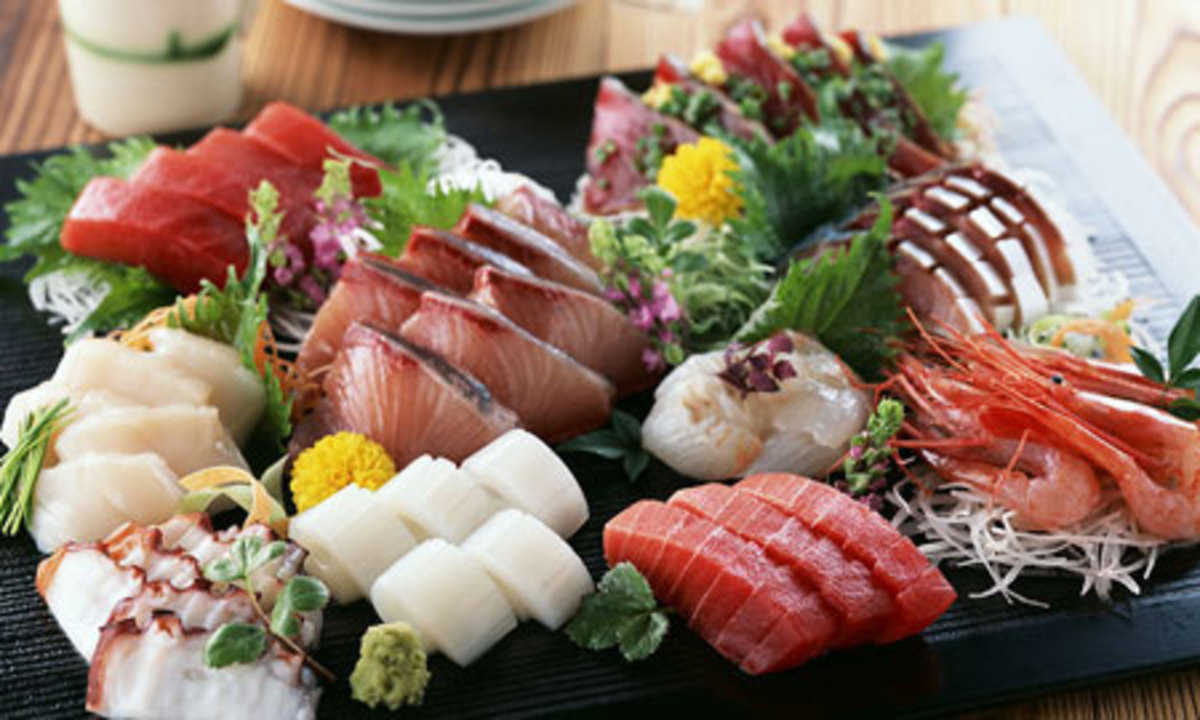- HubPages»
- Food and Cooking»
- World Cuisines»
- East Asian Cuisine
Top 10 Sushi – Japan’s Most Popular, Eye-catching, and Multicolored Food


Arguably the most popular Japanese food outside of Japan and one of the most popular dishes within Japan itself is the exotic, colorful, and simply striking sushi, a Japanese delicacy prepared with rice flavored with sushi vinegar, raw ingredients that often include seafood, and sometimes a black seaweed wrapper used to tie bite-sized rice and ingredients together.
Sushi has become so popular the world over that it has spawned scores of variety, usually Western-style sushi that have been prepared to suit the palates of non-Japanese people.
In Japan, sushi is one of those foods that Japanese people like eating during special events, like Japanese matsuri or festivals, weddings, or even after high-powered business meetings.
Below is a list of the ten most popular sushi from Japan. While there are so many kinds of sushi and each of us has his or her favorite, this list is something with which many Japanese might agree.
1. Amaebi or Sweet Shrimp Sushi
Almost translucent and definitely fragile raw tails of shrimps or prawns, amaebi is a Japanese sushi that is often served as nigiri or sashimi.
If it is served as sashimi, then only the raw slices of shrimp or prawn are served.
If it is served as nigiri, then the head and shell are removed and the meat is halved in the middle. The removed head would then be deep-fried. Naturally, amaebi presented as nigiri should be served in pairs since the meat was cut lengthwise into two portions.
Amaebi is often topped with raw eggs of tobiko or ikura. Tobiko is flying fish roe while ikura is salmon roe.
2. Basashi or Horse Meat Sushi
While horses have become a gentle companion and even pets to many people in most countries of the world, they have become so much a part of the Japanese cuisine.
In Japan, people eat basashi or raw horse meat cut in thin slices.
Basashi appears pink and is affectionately called sakura, referring to the well-loved Japanese flower cherry blossoms that are also pink in color.
Horse meat has become so popular in Japan that many people eat it in izakaya, Japanese-style drinking restaurants that are everywhere the country.
It is eaten as yakiniku or barbecue, as an ice cream, as a dessert, and even has canned versions.
3. Fugu or Pufferfish / Blowfish Sushi
Unquestionably the most exotic and potentially the most dangerous of all sushi is the one made of fugu or pufferfish or blowfish in English.
This fish is highly toxic because of its tetrodotoxin or zombie powder that has no known antidote.
Still, Japanese people love to eat fugu as sushi in government-accredited restaurants where only chefs who passed rigorous training could prepare this dish.
The chefs make sure that the toxic parts are removed and do not contaminate the other parts of the meat.
Japanese people especially love eating the liver of fugu, said to be the tastiest part yet potentially the most toxic.
4. Hamachi or Yellowtail Sushi
Widely considered as a luxurious kind of sushi is hamachi, sushi made of farmed yellowtail, yellowtail amberjack, and amberjack fishes.
Hamachi is so valuable in Japan for its rich, oily texture and delicate flavors.
It is said to be tastiest during winter, when the oils in the fish can literally fend off soy sauce, a popular dip for sushi.
Hamachi has faint pink color and a sweet aftertaste.
5. Hotate or Scallop Sushi
Possibly one of the perennial favorites of Westerners among the many kinds of sushi is hotate, sushi made of very tasty scallops that are rich in flavor-enhancing glycogen.
Hotate is very soft in texture and a bit sweet to the taste.
Sushi chefs use only the muscles of scallops for sushi. Scallops are known to have well-developed muscles for they can swim even near the ocean floor.
Since scallops swim near the ocean floor, then chefs would need to soak them in water before serving them. Soaking pushes out sands that have gone trapped in scallop meat.
6. Kani or Crab Sushi
A sushi with so many kinds in itself is kani or crab, which can be a blue crab, king crab, Dungeness crab, snow crab, or stone crab.
In Japan, kani can be imported from all over the world – from the United States, Russia, Canada and the northern part of Japan.
The authentic kani is fresh and raw, definitely not cooked.
In other parts of the world, sushi bars serve kani in cooked and refrigerated versions and have even created kani sticks, which are actually made of other kinds of fish.
7. Maguro or Bluefin Tuna Sushi
A sushi that is currently having an incredible demand in Japan is maguro or bluefin tuna, which is priced dearly for its flavor, feel, and dearth.
Japan has immense demand for maguro, importing this fish literally from all corners of the globe.
Because of its huge demand, the country has faced growing protests from environmentalists who urge governments to limit tuna importation to Japan.
In Japan, people eat maguro as akami or lean part, toro or the fatty part, chutoro or tuna belly, and otoro or the fattiest part of the tuna.
8. Sake or Salmon Sushi
A sushi that is renowned for its antioxidant properties is sake, salmon sushi that has mega-doses of omega-3 and vitamin E that can reverse the aging process and make humans healthy.
Sake is an oily fish that is a bit soft in texture. It has a strong flavor and has been used as an alternative to red meats.
Many sushi chefs use young salmon for sushi, as this kind of fish is very oily and therefore nutritious. They also make sushi out of salmon belly, which is also soft and tasty.
9. Uni (sea urchin)
Another sushi that is enjoying impressively high demand in Japan and is therefore a bit expensive is uni, sushi made from the gonads of the edible part of the sea urchin.
It has almost golden yellow color, briny flavor, and sweet aftertaste.
This particular kind of sushi has a delicate process of preparation, as sushi chefs carefully remove the lobes of sea urchins, taking care to keep the ultra-soft meat intact.
Uni in Japan is seasonal, with most Japanese eating it during fall or autumn when sea urchins are said to be at their finest.
10. Unagi or Eel Sushi
An exception to the typical raw sushi is unagi or eel, a fish that is always filleted, grilled and flavored with sauces before being served.
An unagi sushi that has been prepared well has a sugary aroma as well as a very earthy and sweet taste.
The sauce used for basting this kind of fish is made of soy sauce, rice wine, and sugar.
Copyright © 2011 Kerlyn Bautista
All Rights Reserved
Interesting and Useful Hubs About Japanese Foods
- Time-Tested Effective Japanese Foods for Weight Loss
- Top 5 Japanese Super Foods for Long and Healthy Life
- Quick and Simple Guide to 8 Popular Japanese Foods
- Weight Loss Benefits of Shirataki Noodles and Many Healthy Reasons to Eat Them
- Weight Loss Benefits of Soba Noodles and Healthy Reasons to Eat Them
- Miso – Health and Diet Benefits, Plus Recipes





